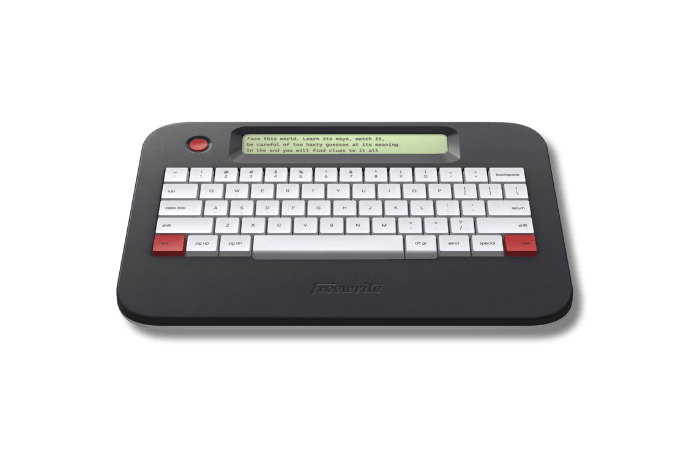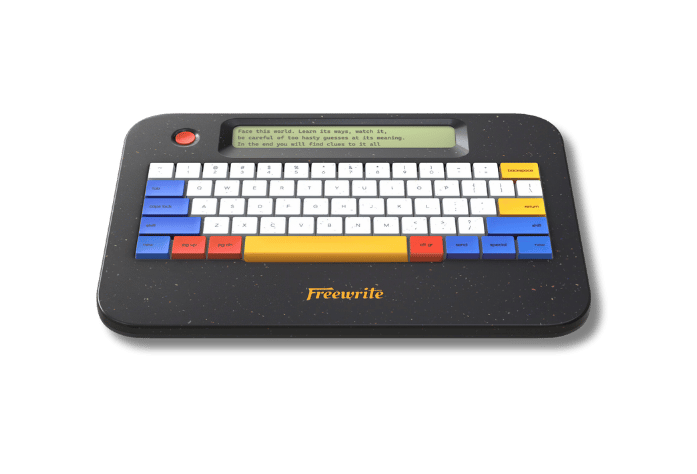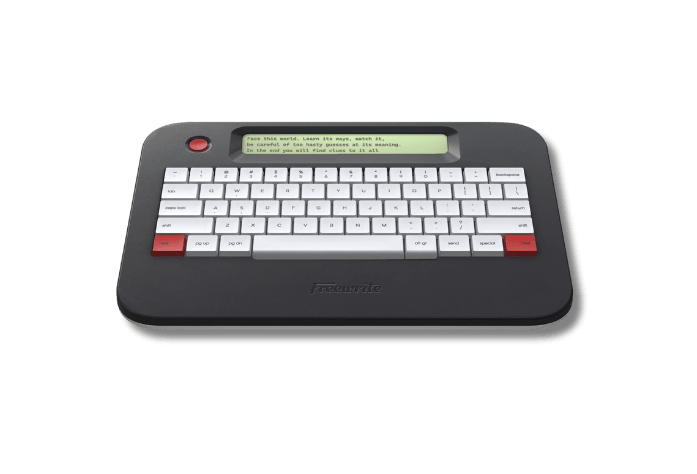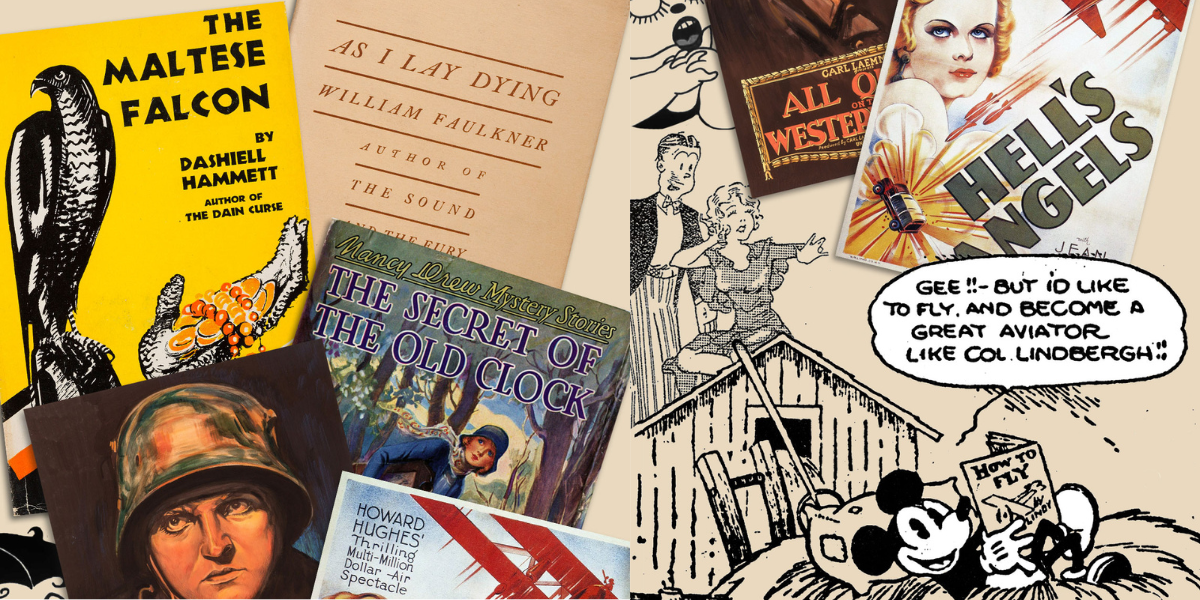Today’s guest post is by author Jeff Somers. He has published nine novels, including the Avery Cates Series of noir-science fiction novels from Orbit Books, the darkly hilarious crime novel Chum from Tyrus Books, and most recently tales of blood magic and short cons in the Ustari Cycle.
When Truman Capote died in 1984, he hadn’t published a major work since the absolute classic In Cold Blood in 1965. He’d produced material, yes; mainly short stories and some screenplays. Some of that work had been highly regarded, but nothing on the scale and ambition of In Cold Blood or Breakfast at Tiffany’s. Over the course of those two decades, Capote had transformed from a predominantly literary figure into a general celebrity, a man known for his parties, his circle of famous friends, his wit, and his television appearances more than his writing.
 But Capote hadn’t been idle. In fact, in January 1966 he signed a contract with Random House for a new novel, receiving a $25,000 advance (nearly $200,000 in 2017 money). The book proposal was ambitious: A modern reworking of Proust’s immense In Search of Lost Time. Capote worked on the book (titled Answered Prayers) for the next twenty years, occasionally publishing chapters from it, and renegotiating his contract twice (getting a further $750,000 in 1969 and a promise of $1 million if he ever finished the book in 1980, money he never saw). He once remarked about the book “either I'm going to kill it, or it's going to kill me,” and history shows who won that struggle. The unfinished draft of the novel was published posthumously.
But Capote hadn’t been idle. In fact, in January 1966 he signed a contract with Random House for a new novel, receiving a $25,000 advance (nearly $200,000 in 2017 money). The book proposal was ambitious: A modern reworking of Proust’s immense In Search of Lost Time. Capote worked on the book (titled Answered Prayers) for the next twenty years, occasionally publishing chapters from it, and renegotiating his contract twice (getting a further $750,000 in 1969 and a promise of $1 million if he ever finished the book in 1980, money he never saw). He once remarked about the book “either I'm going to kill it, or it's going to kill me,” and history shows who won that struggle. The unfinished draft of the novel was published posthumously.
There are many possible reasons why Capote couldn’t finish this novel. Maybe his celebrity was too enticing and he lost his drive to create. Or it might have been the reaction early chapters received: Much of the book was a thinly veiled depiction of his high society friends and their very embarrassing behavior, which cost him those friends—something that Capote reportedly took very hard. Or maybe it was just one of those books that all authors begin and then lug around with them for years, even decades—sometimes their whole lives. We call them Trunk Novels—novels that start off with so much promise, so much excitement, and then proceed to consume hundreds of thousands of words and huge tracts of time without ever coalescing into something resembling coherency. Every author has at least one. Most of us have several.
Too Good To Fail
The problem with a Trunk Novel is there’s something there. A premise or an experiment, an energy, a challenge—something that brings you back to it again and again even though you can never get it to work. You revise, you scrap and start over, you recast it in different genres, you try to put it away and forget about it, but you can’t. And even if you are eventually able to put the book aside, should you? After all, you put a lot of good work into it. A lot of time, ideas, and solid writing. Instead of abandoning Trunk Novels, rethink them—here are three strategies for getting them out of your trunk and into publishable shape without losing any more of your sanity or precious time.
Method 1: The Mashup
If you’ve got more than one Trunk Novel cluttering up your hard drive with its imperfect sadness, one ambitious but potentially brilliant strategy is to combine them. This requires a certain amount of overlap in terms of genre and style, of course (though it doesn’t have to be a perfect match, as many genres combine wonderfully well—like romance and horror) and will probably need quite a bit of fix-up revision, but it can work.

(Photo by Erwan Hesry on Unsplash)
The reason why it works is simple: Many Trunk Novels have great stuff in them—and it’s often complementary stuff. One novel I was working on for years had a solid plot, a good framework of events and motives, but it lacked interesting characters and lush description. A second book, separated from the first by several years, had a cast of characters I loved spending time with, but meandered through a plot that barely qualified. Taking the two and combining them resulted in a strong novel that popped off the page. I haven’t sold that novel yet, but my agent is enthusiastic.
Method 2: Call It
Sometimes you can get caught up in the supposed “rules” of professional writing. One of those rules concerns the marketability of a novel, and specifies that in order to have any chance your novel has to hit a certain word count (80,000 words is usually the quoted number, though you’ll hear variations on that). And thus, were a million Trunk Novels born because writers are reluctant to admit that what they’ve actually written is a novella or a short story.
Writers sometimes desperately try to turn works into novels because they think novellas are impossible to sell, and short stories aren’t worth it in terms of money or attention. But novellas are actually easier to sell these days than in the past, thanks to digital platforms that don’t really care about word counts, and short stories have been having a Moment as increasing numbers of them are being adapted into film and television—see Arrival, The Grey, and Total Recall—leading many agents to reevaluate the wisdom of writers spending time and effort on shorter works.
 (Photo by Simson Petrol on Unsplash)
(Photo by Simson Petrol on Unsplash)
So, if you have a novel that’s been sitting in the Trunk for a while, consider whether the problem isn’t the story or the writing, but it’s girth. Is it a novella or short story that you’ve been trying to bulk up to novel size? Try cutting it mercilessly down and see what you have. You might be surprised.
Method 3: The Inversion
Another way to save a Trunk Novel from oblivion is to run a critical eye over your assumptions about the book. That initial moment of inspiration we experience is often powerful—one of the best things about being creative is that rush of energy when you have “the idea.” That power also burns certain things into your brain, like who the main or POV character should be, or the tone the story needs, or the precise pacing of the plot events. Over time, these turn into assumptions—no matter how often you attack the book unsuccessfully, you never think about changing the bedrock of that initial inspiration. You become blind to the possibilities offered by other characters who might be promoted or explored, other stylistic choices, or other third acts that go off in crazy directions.
 (Photo by Dardan Mu on Unsplash)
(Photo by Dardan Mu on Unsplash)
The secret sauce in this approach isn’t so much that you were wrong about everything from the beginning, but in the thrill of the unknown. By the time you’re ready to admit that a book is a Trunk Novel, there’s a very good chance you’ve been over each scene, every line of dialog, and every plot twist many, many times. It’s familiar, and familiarity breeds contempt and blindness. You can’t see it any more. Changing something fundamental about the book forces you into unknown territory, bringing back some of that electric buzz of discovery and revealing new ways forward. With a book stuck in Trunk Mode, that can jump-start the creative process and get you over the finish line.
Not every novel can be saved, and writing a bad book is just part of being a writer—but if you’ve got a novel that just won’t go quietly into that dusty drawer, consider trying one of these techniques to rescue it once and for all. So, how many Trunk Novels are you hauling around with you? Have you ever managed to make one work? Let us know if you did, and if so, how you did it!

Jeff Somers (www.jeffreysomers.com) began writing by court order as an attempt to steer his creative impulses away from engineering genetic grotesqueries. He has published nine novels, including theAvery Cates Series of noir-science fiction novels from Orbit Books (www.avery-cates.com) and theUstari Cycleseries of urban fantasy novels. His short story “Ringing the Changes” was selected for inclusion inBest American Mystery Stories 2006,his story “Sift, Almost Invisible, Through” appeared in the anthologyCrimes by Moonlight edited by Charlaine Harris, and his story “Three Cups of Tea” appeared in the anthologyHanzai Japan. He also writes about books forBarnes and Noble andAbout.com and about the craft of writing forWriter’s Digest, which will publish his book on the craft of writingWriting Without Rules in 2018. He lives in Hoboken with his wife, The Duchess, and their cats. He considers pants to always be optional.

















 (Photo by
(Photo by  (Photo by
(Photo by 











